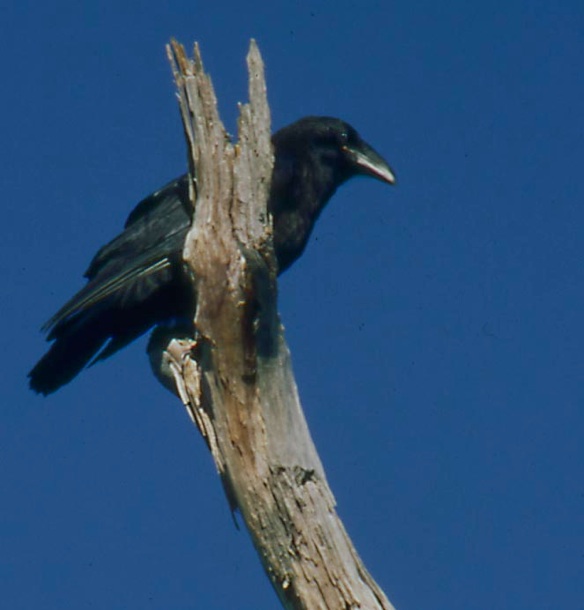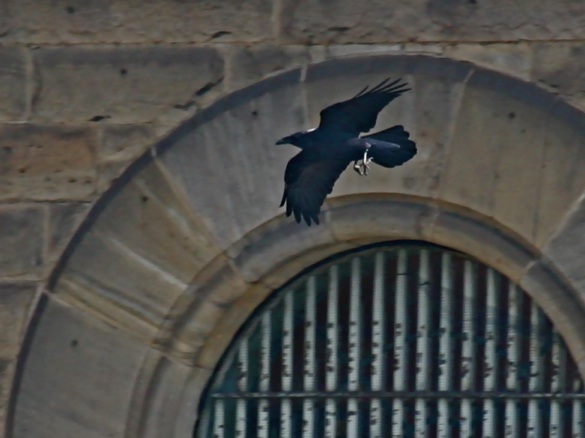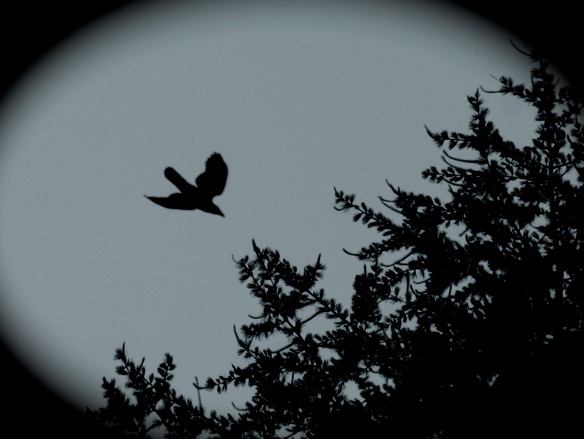The Nature
Observer’s Journal
The Nature
Observer’s Journal

Ravens’ Nest
Chuck Tague
On March 3, 1998 I spotted several male Red-winged Blackbirds along I-79. Just before dawn that morning an American Robin sung his rolling melodious song in the sycamore trees outside my bedroom. In the evening I heard the whirring wings of a courting woodcock’s aerial display in Moraine State Park. The earliest spring migrants had returned to western Pennsylvania.
These hardy birds are just the beginning. They are the vanguard of a huge movement that will bring millions of birds to the fields and forests of eastern North America to take advantage of spring’s tremendous explosion of life. They will use the bountiful but temporary resources of the season to raise their young.
Their journeys are often long and always filled with hardship and danger. Most migrants don’t arrive in Pennsylvania until the days are longer and the temperature warmer, timing their arrival with some key resource, usually caterpillars that feed on newly emerging leaves. The first rugged birds to return, however, often find snow, ice and frozen ground. Survival for these birds is difficult and the conditions favorable to the serious business of nest building and incubating eggs are several weeks away.
Not all species choose to migrate. A few tough it out and remain in north all winter. Some of the largest of these nest incredibly early, and when the robins, blackbirds, bluebirds, grackles and the other early migrants return, they’ve already begun to breed. By the first days of March the Bald Eagles have finished constructing their nest, the Great Horned Owl young have hatched and the Common Ravens are sitting on eggs.

On March fourth I walked through the Laurel Highlands. I chose this particular route because it passed a long abandoned quarry. In the early part of this century stone cutters had created high rocky walls full of ledges and crevices while preparing paving stones for Pittsburgh’s streets. A couple of summers before Dave Darney noticed telltale splatters of whitewash along the cliffs. On a ledge above the stains he spotted a bulky, well-used nest of sticks and twigs. By then the young ravens had already fledged and the family had moved on. That November, following Dave’s directions I visited the cliffs and easily located the old nest. In another recess several yards away was a second, weather worn nest the ravens had used a few years earlier.
Ravens are spectacular fliers, capable of soaring to great heights and riding the winds and thermals as well as any hawk or eagle. They seem to delight in tumbling and rolling in mid air as they glide along the high ridges. The largest perching bird in North America, ravens weigh over three pounds, three times the weight of the similar but much smaller American Crow. Unlike the widespread crows that often congregate in huge flocks, raven families in Pennsylvania keep to themselves and avoid conflicts with people by favoring heavily forested, mountainous habitats.

Raven at the old Western Penitentiary -- Since I wrote this article Common Ravens have expanded their range to lower altitudes. A pair bred along the Ohio River in Pittsburgh in 2007.
Their nests, constructed of large sticks and lined with soft material like deer hair, are occasionally built on top of large pine trees deep in the forest, but more often they are hidden high in inaccessible cliffs. Locating a raven’s nest takes hard work and perseverance, or a lot of luck and a tip from a good friend.
As I approached the cliffs a large black bird flew silently out of the rocks about fifty yards in front of me and landed high in a tree another hundred feet up the trail. Through my binoculars I could see a thick, angular beak. Loose, shaggy feathers hung from its neck and its longish tail appeared to be tapered. This was no crow. Or was it? The raven, probably the female, removed my doubts with a loud, guttural “Kraw-k.” I scanned the rocks and quickly located a clean, new pile of sticks. As I expected, the raven family had returned.

It was a cold, damp day and the temperature was dropping. According to my books, ravens lay eggs as early as late February in Pennsylvania. As much as I wanted to study the fresh nest and admire the normally cautious bird that was perched uncharacteristically close to me, I was concerned that my presence might be keeping her from her duties and endangering the eggs. I turned and walked back.
As I left I heard a series of harsh angry kronks. I looked up in time to see another raven, the first bird’s mate, circling over my head. I continued away from the cliffs. Convinced that its nest and mate were safe, the raven turned and flew off across the valley. As I watched him soar away he suddenly and gracefully executed two perfect forward rolls then glided out of sight into the treetops.

Young ravens ready to fledge, Westmoreland Co., PA May 2008
Tuesday, March 13, 2012
